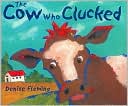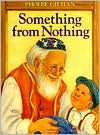Early Literacy Aside--Explain: Researchers have found that one of the early literacy skills is phonological awareness. This is the ability to hear and play with the smaller sounds in words, like rhyming, playing with syllables or parts of words, and hearing beginning sounds of words. The beginning of this skills starts with children hearing and saying the sounds of animals.Sometime durng storytime sing "Old MacDonald" with the children, including several animals--cow, pig, sheep, chicken, duck, etc. Early Literacy Aside--Example: Making the sounds of animals contributes to phonological awareness and hearing sounds in words. Early Literacy Aside--Empower: Take advantage of opportunities to sing and say the sounds of animals with your children. It's fun and it also helps them hear the smaller sounds in words.
Submitted by Kimberly Burnette-Dean, Roanoke County (VA) Public Library

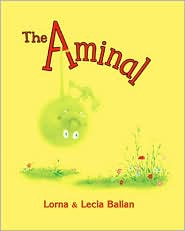 Early Literacy Aside--Explain: Narrative skills is helping your child tell a story. Researchers say this is an important skill towards your child learning to read, understanding what he will read. In this storytime we will have fun while using narrative skills.During the storytime:
Early Literacy Aside--Example: In this story we will be using narrative skills to tell our story and to talk about the events taking place. Narrative skills is one of the early literacy skills that help your children learn to read. This includes giving your children time to think about and answer questions about the story. Listen as I ask questions that cannot be answered with just yes or no.
Read the book.
Early Literacy Aside--Empower: Ask your child about storytime today when you get home and help them retell one of the stories. You'll be continuing to develop your child's narrative skills!
Early Literacy Aside--Explain: Narrative skills is helping your child tell a story. Researchers say this is an important skill towards your child learning to read, understanding what he will read. In this storytime we will have fun while using narrative skills.During the storytime:
Early Literacy Aside--Example: In this story we will be using narrative skills to tell our story and to talk about the events taking place. Narrative skills is one of the early literacy skills that help your children learn to read. This includes giving your children time to think about and answer questions about the story. Listen as I ask questions that cannot be answered with just yes or no.
Read the book.
Early Literacy Aside--Empower: Ask your child about storytime today when you get home and help them retell one of the stories. You'll be continuing to develop your child's narrative skills!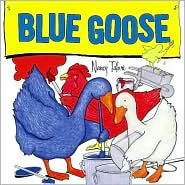 Early Literacy Aside--Explain: Researchers have found that 95% of children's attention goes to the pictures in the book. When you run your fingers under the title as you read it, this helps show them you are reading the text, not the pictures. This is part of print awareness and is one of the skills children need to learn to read.During the storytime--Read the book running your finger under the repeated phrases.
Early Literacy Aside--Example: You can run your finger under the repeated phrases to match the text to the words. Then your action doesn't get in the way of the story. Read the book running your finger under the repeated phrases.
Early Literacy Aside--Empower: When you read withyour children at home, hold the book upside down or backwards and see if your child notices. Be sure to turn the book if a page is in a different direction. Theis helps develop their print awareness.
Submitted by Melissa Davis, Bedford (VA) Public Library
Early Literacy Aside--Explain: Researchers have found that 95% of children's attention goes to the pictures in the book. When you run your fingers under the title as you read it, this helps show them you are reading the text, not the pictures. This is part of print awareness and is one of the skills children need to learn to read.During the storytime--Read the book running your finger under the repeated phrases.
Early Literacy Aside--Example: You can run your finger under the repeated phrases to match the text to the words. Then your action doesn't get in the way of the story. Read the book running your finger under the repeated phrases.
Early Literacy Aside--Empower: When you read withyour children at home, hold the book upside down or backwards and see if your child notices. Be sure to turn the book if a page is in a different direction. Theis helps develop their print awareness.
Submitted by Melissa Davis, Bedford (VA) Public Library

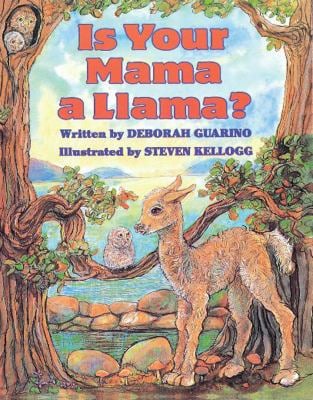
 Early Literacy Aside--Explain: Vocabulary is a very important early literacy skill. By vocabulary, I mean knowing the meanings of words. Today we're focusing on the concept of opposites.
Read the book Maisy Big, Maisy Small by Lucy Cousins with time to allow participants to respond with the opposite word. [Add a synonym for a couple of the words as well. If a participant gives a different word for the opposite word, comment on it. For example if you say big and the book says small, but a child says tiny, you can note that tiny and small have similar meanings and both are the opposite of big.]
Early Literacy Aside--Example: Using this book your children filled in the word meaning the opposite of the one I said from the book. You can always add more interesting words for both the opposite and synonyms for some words. In this way you build your children's vocabulary.
Early Litearcy Aside--Empower: Today in storytime we talked about opposites. As you go about your day, when talking about feelings (hungry, full, tired, wide awake), about what you are doing (relaxing, hurrying, walking slowly, running quickly), or playing, there are many opportunities to think of opposites which builds your children's vocabulary. These little things you do throughout the day will later help them understand what they read.
Early Literacy Aside--Explain: Vocabulary is a very important early literacy skill. By vocabulary, I mean knowing the meanings of words. Today we're focusing on the concept of opposites.
Read the book Maisy Big, Maisy Small by Lucy Cousins with time to allow participants to respond with the opposite word. [Add a synonym for a couple of the words as well. If a participant gives a different word for the opposite word, comment on it. For example if you say big and the book says small, but a child says tiny, you can note that tiny and small have similar meanings and both are the opposite of big.]
Early Literacy Aside--Example: Using this book your children filled in the word meaning the opposite of the one I said from the book. You can always add more interesting words for both the opposite and synonyms for some words. In this way you build your children's vocabulary.
Early Litearcy Aside--Empower: Today in storytime we talked about opposites. As you go about your day, when talking about feelings (hungry, full, tired, wide awake), about what you are doing (relaxing, hurrying, walking slowly, running quickly), or playing, there are many opportunities to think of opposites which builds your children's vocabulary. These little things you do throughout the day will later help them understand what they read.